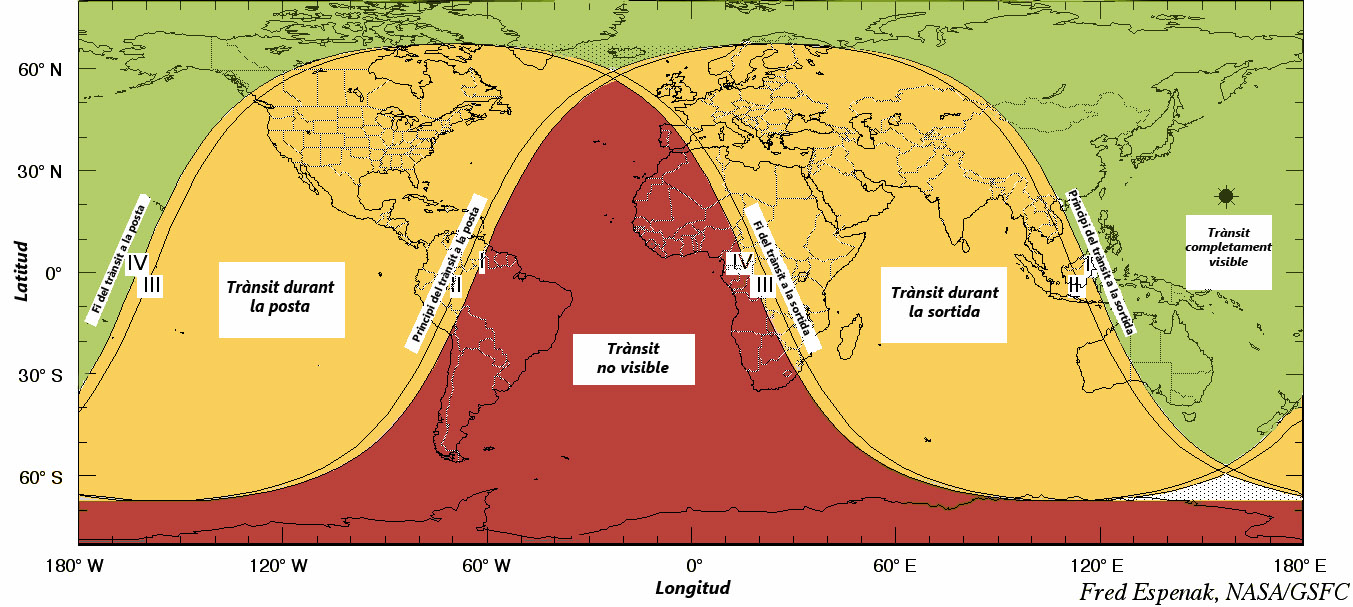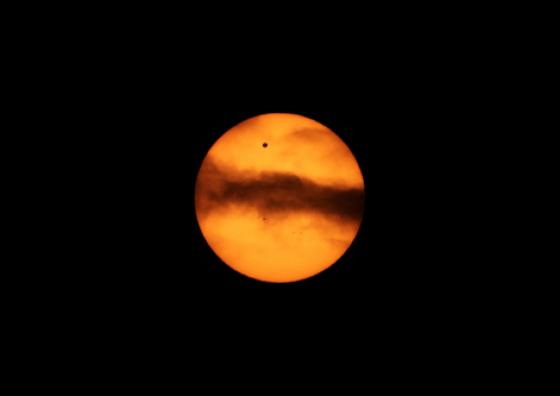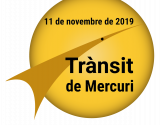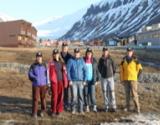Between the 5th and 6th of June of 2012 we can observe a transit of Venus.
Observation times
During a transit we can distinguish some remarkable moments:
- Contact I, or external ingress: the instant when the planet's disk is externally tangent with the Sun.
- Contact II, or internal ingress: the instant when the planet's disk is internally tangent with the Sun. The entire disk of the Venus is first seen.
- During the next several hours, Venus gradually traverses the solar disk at a relative angular rate of approximately 4 arcmin/hr.
- Greatest transit is the instant of minimum angular separation between Venus and the Sun as seen from Earth's geo-centre.
- Contact III, or internal egress: the instant when the planet reaches the opposite limb and is once again internally tangent with the Sun.
- Contact IV, or external egress: the instant when the planet's limb is, similarly to contact I, externally tangent to the Sun but at the opposite side of the Sun. The transit ends at this contact.
The next figure illustrates the geocentric observing geometry of each transit across the Sun (celestial north is up).

We attach a table of transit's contacts where you can found when those contacts, of Venus with the solar perimeter, take part in more than 100 cities in the world.





